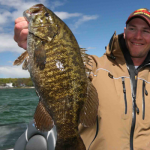By Kenny Lookingbill
Bluegills are one of the most popular fish among anglers in the United States. Many times, they are an angler’s first catch. They are known for their spirit and spunk, being a dependable fish to catch when other fishing slows down, and great for the frying pan. But there are other lepomis out there for the advanced multi-species fanatics.
Lepomis is a genus of sunfish that are widespread throughout North America with many species with different distributions. They all have the same basic body morphology, slab sided, and very long pectoral fins in respect to their body size, so that they can pivot quickly. Lepomis are known to hybridize often within their genus, and sometimes it is nearly impossible to determine the species involved in the hybridizations without genetic testing. This diversity of species and hybrids makes this group of fishes highly sought after by multispecies enthusiasts and fish nerds alike. One species, the red-spotted sunfish, is endangered in Illinois making them a catch of a lifetime of sorts.
For the purpose of this article, I am going to focus on mainly on lepomis species found in the Upper Midwest because of my experience as well as knowledge of those. I will also touch on rock bass, which are members of the genus ambloplites, closely related to lepomis. Tactics and techniques of fishing for lepomis species, which necessitates the use of light tackle and line or fly fishing, are pretty universal because of their similar feeding guild. However, there is no good way to target specific species. The best chance is to do some background research of the distribution of the fish of interest and what bodies of water the individuals can be found in. Also, some fisheries surveys done by state biologists are available that can point you in the right direction where different species are present. Additionally, angler word of mouth can be reliable as well, although care must be taken because most anglers may not be good with species identification (redear sunfish and pumpkinseed sunfish are often confused by those without much identification experience). Stream fishing is also one of the best places to look for sunfish species. Last but not least, be patient. You may only add one new fish in a year. Some of the uncommon individuals will not come easy and it will take a lot of work and patience.
Green Sunfish
Green sunfish are probably about the most common lepomis species to target besides bluegill. They are very easy to catch because of their aggressive behavior, which makes them undesirable in some fisheries because of their aggression toward bluegill. They are found in a large variety of habitats, including rip rap, weeds, and current breaks in streams, making them an even easier target. They may be taken on live bait, jig and grubs, hair jigs, flies, and even some crankbaits.
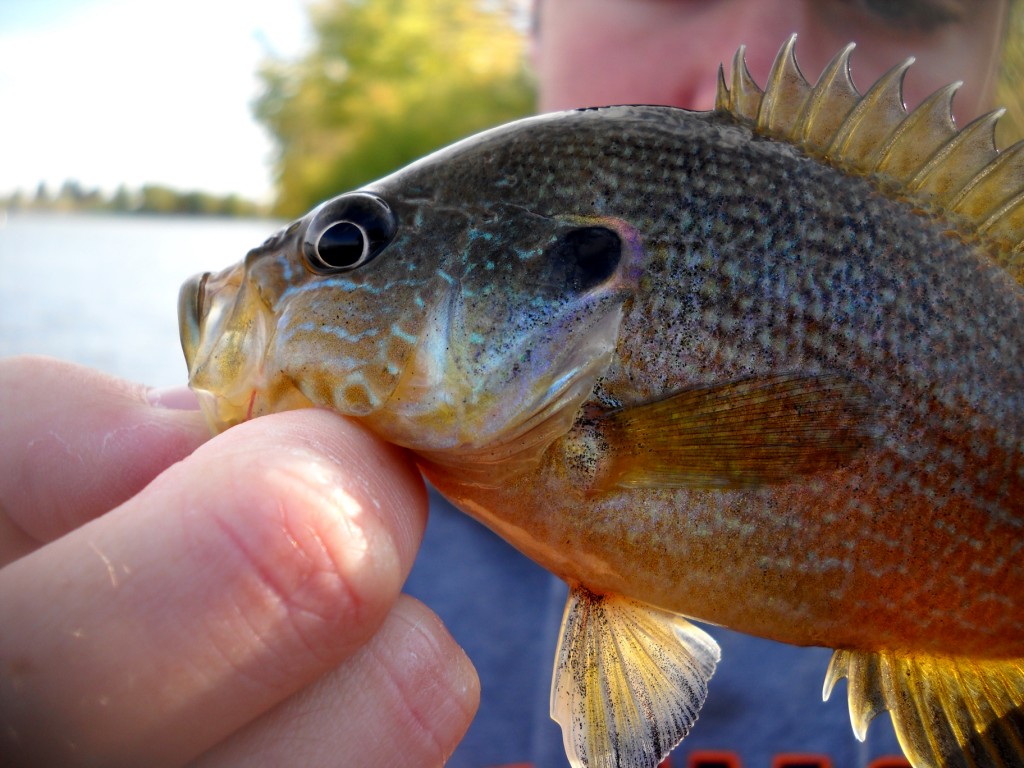
Redear Sunfish
Redears are different from other lepomis because they have pharyngeal teeth that are used for crushing shells of gastropods like snails. They are commonly found in bodies of water that have a lot of vegetation, which attracts snails, and the redears are not far behind. Redear are commonly stocked in ponds and lakes that have problems with snails because they are so effective at controlling their populations. However, you do not have to use snails as bait because they are opportunistic feeders and will feed other invertebrates and small fish. Live bait, especially waxworms, and jig and grub in weedy areas are the best options for this fish. They are almost exclusively found in lake and pond environments.
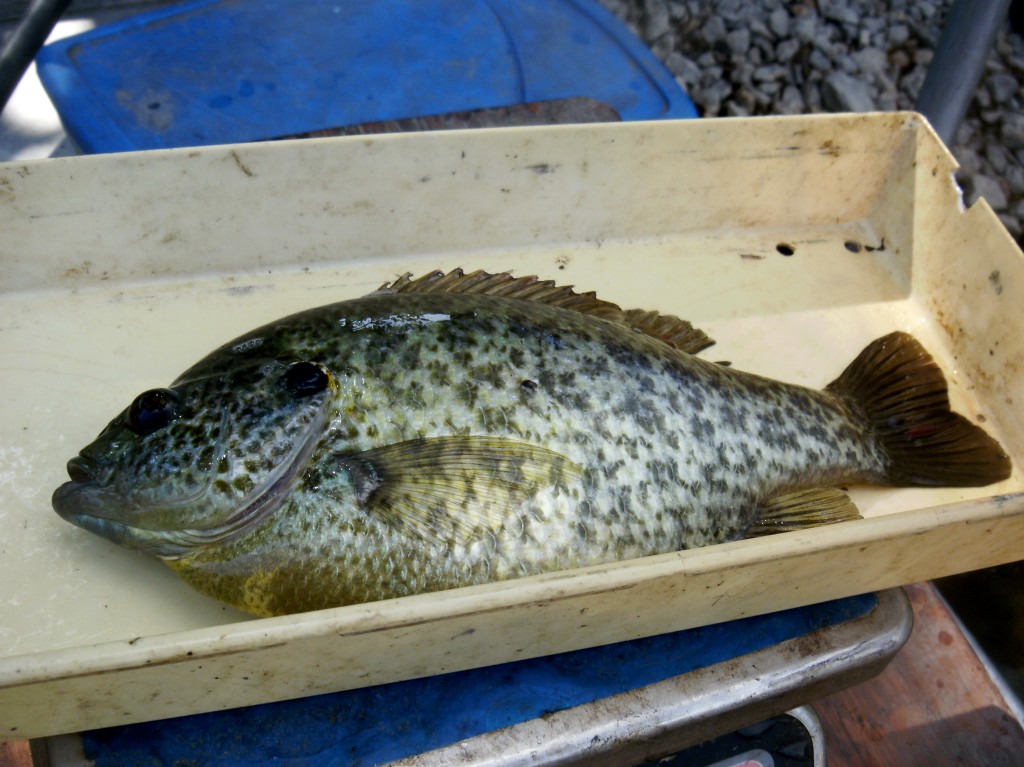
Pumpkinseed
Pumpkinseed are common in lakes in the Upper Midwest, mainly natural lakes in Wisconsin and Michigan, but can be found in reservoirs and smaller impoundments. One popular place in Illinois is the backwater restoration project is Emiquon Lake, where new state records are being caught each year, as they have flourished since being stocked. They can be caught by targeting weedlines year round with live bait or jigs.
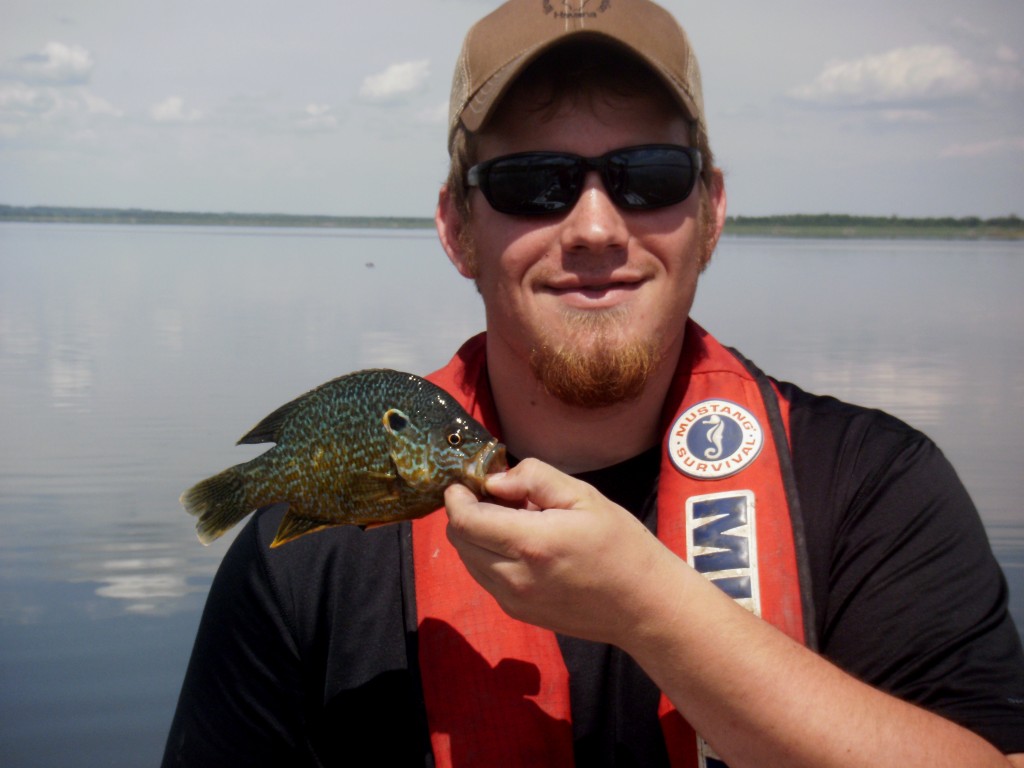
Warmouth
Warmouth are widespread and can be found in a wide variety body of water and habitats. They can be encountered in small ponds, reservoirs, small streams, and backwater habitats of large rivers. They are not typically encountered in high densities unlike other lepomis, so patience will have to be practiced when trying to catch a warmouth. They can be typically caught on live bait or small jigs, but they can also be caught on hair jigs, flies, and even small crankbaits. Focus on fishing weedlines or rip rap.
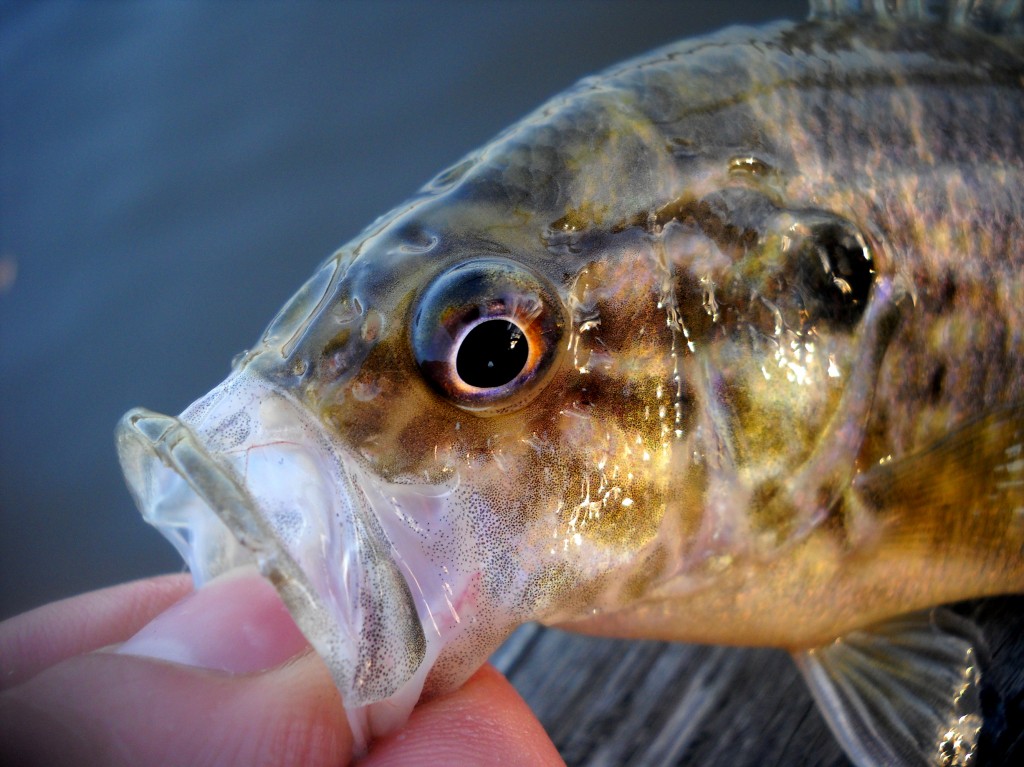
Rock Bass
Rock bass are mainly a riverine fish found in rivers of all sizes. They are typically found in slack water areas, but can also be found on mid channel structure, deeper pools, rip rap, and timber. Small jigs are very effective, but they can also be taken on minnows and small crankbaits.
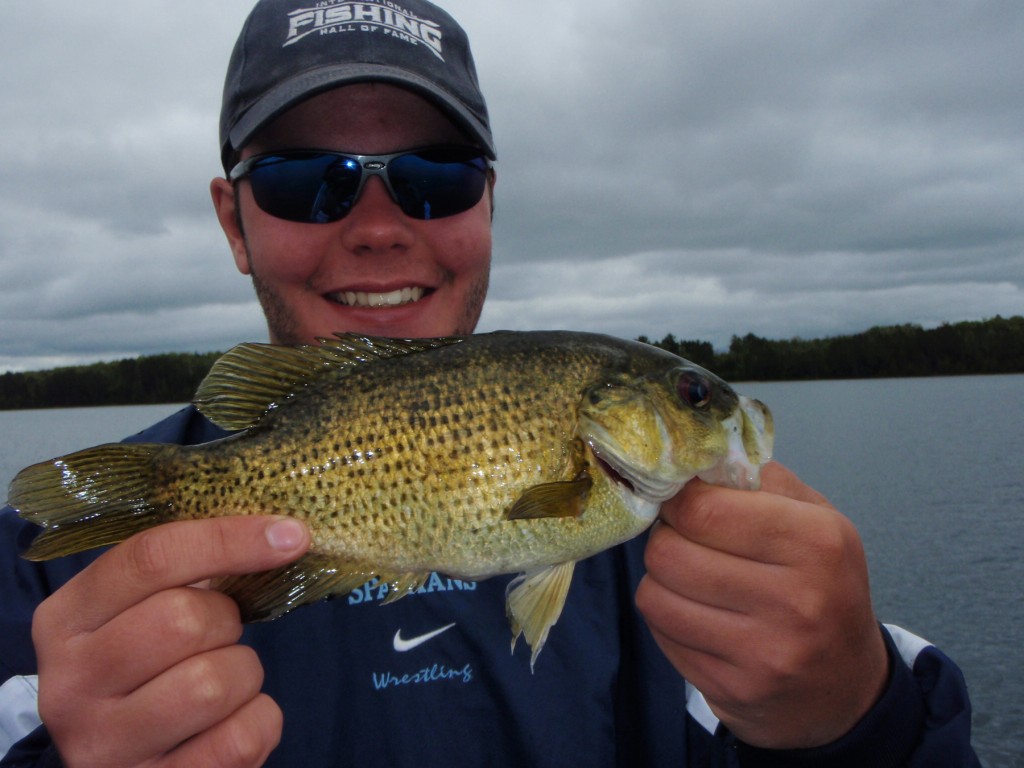
Orange-Spotted Sunfish
Orange-spotted sunfish are among the smallest lepomis species, rarely reaching lengths of 6”, and as a result you will need to downsize tackle. Small chunks of nightcrawler, spikes, or Berkley gulp on small hooks and split shots or small flies are the best way to catch this fish. They take a little bit more work, but the reward is great if you catch a male in spawning colors, as they are one of the brightest colored North American freshwater fish. They are mainly found in riverine systems, and found in shallow, sandy substrate areas. They are different from most other lepomis because they have a higher tolerance for more turbid environments.
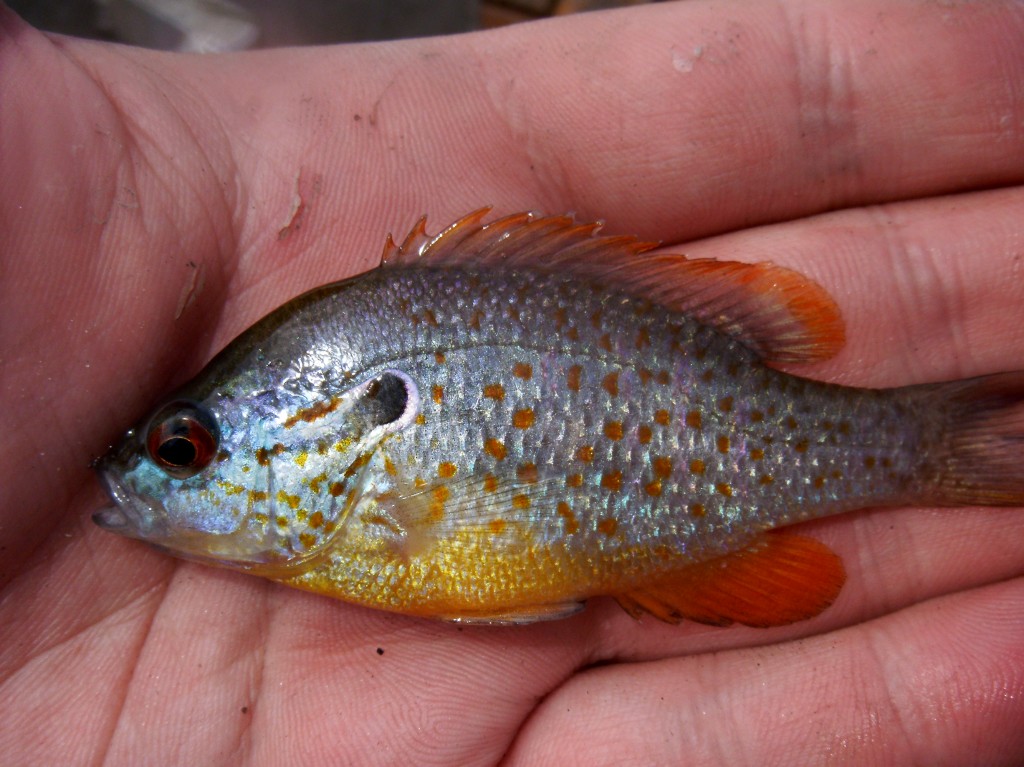
Red-Spotted Sunfish
Red-spotted sunfish are also very small species of lepomis, and they are targeted with the same methods as orange-spotted sunfish. Complicating matters however, the fish is endangered in Illinois. This is due to major habitat degradation, as the fish are found in shallow, marshy backwaters, most of which have been altered or drained. However, some backwater restoration projects have made an effort to restore the species through stocking, notably Emiquon Preserve. Back in 2007, 7,053 were stocked in Emiquon; unfortunately, since then, none have been recovered in fisheries surveys conducted by the Illinois Department of Natural Resources or the Natural History Survey. There is a larger area of the preserve that is shallower, averaging less than a meter in depth, where boats cannot get back into without mud motors, that is off limits to fishing and may have escaped sampling. They are more common further south in states such as Georgia and Oklahoma. Catching one in Illinois would truly be the catch of a lifetime, given their rarity.
There are other species of lepomis that can be targeted with more of a challenge, as they will take more time and travel because they reside in the southern United States. Most likely even the most dedicated multispecies anglers are not going to travel across the country for a spotted sunfish. The best chance is to do research on these fish and if you are ever in the area for work, family, or a fishing trip targeting other fish, to give it a shot then. Stay patient, do your homework on local fisheries, and you will be adding a few more fish to lifetime lists.
Former FHQ blogger and longtime friend, Kenny Lookingbill, 24, of Cambridge, Illinois is an avid multi-species angler who frequently dabbles with the variety of sunfish species. A graduate of Illinois State University with a degree in biology, Lookingbill has used his knowledge of fisheries in order to compete in walleye tournaments with his partner, and successfully win a few events with the Illinois Walleye Trail in 2012.




